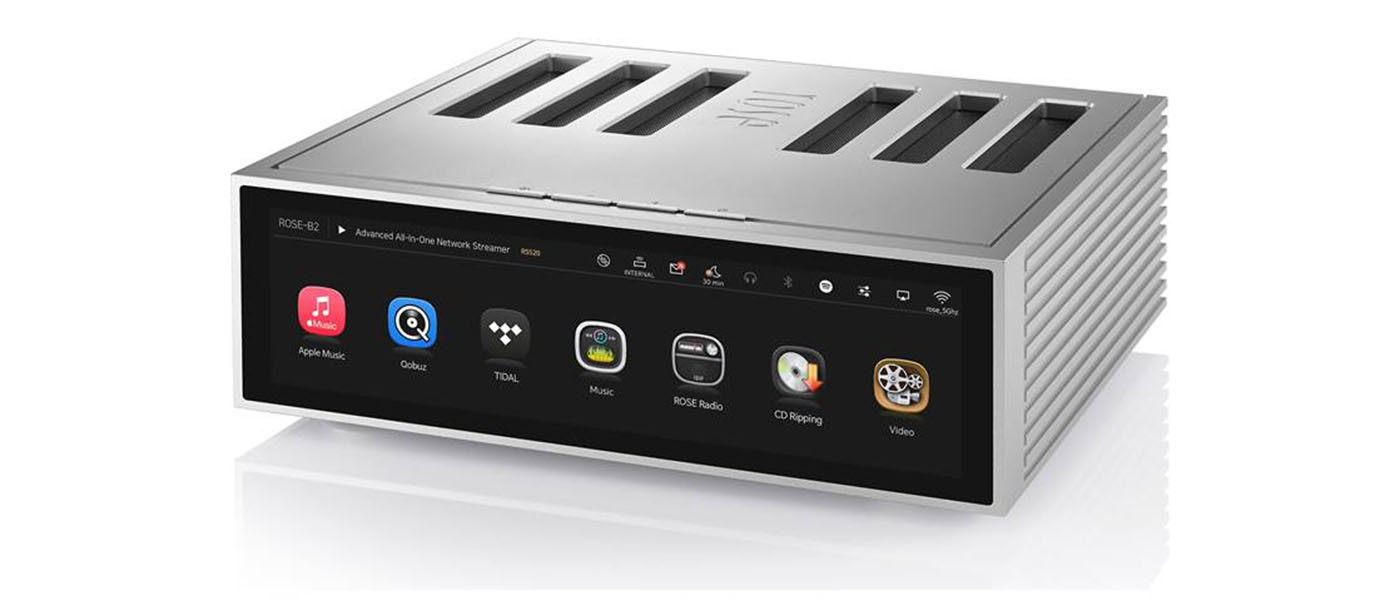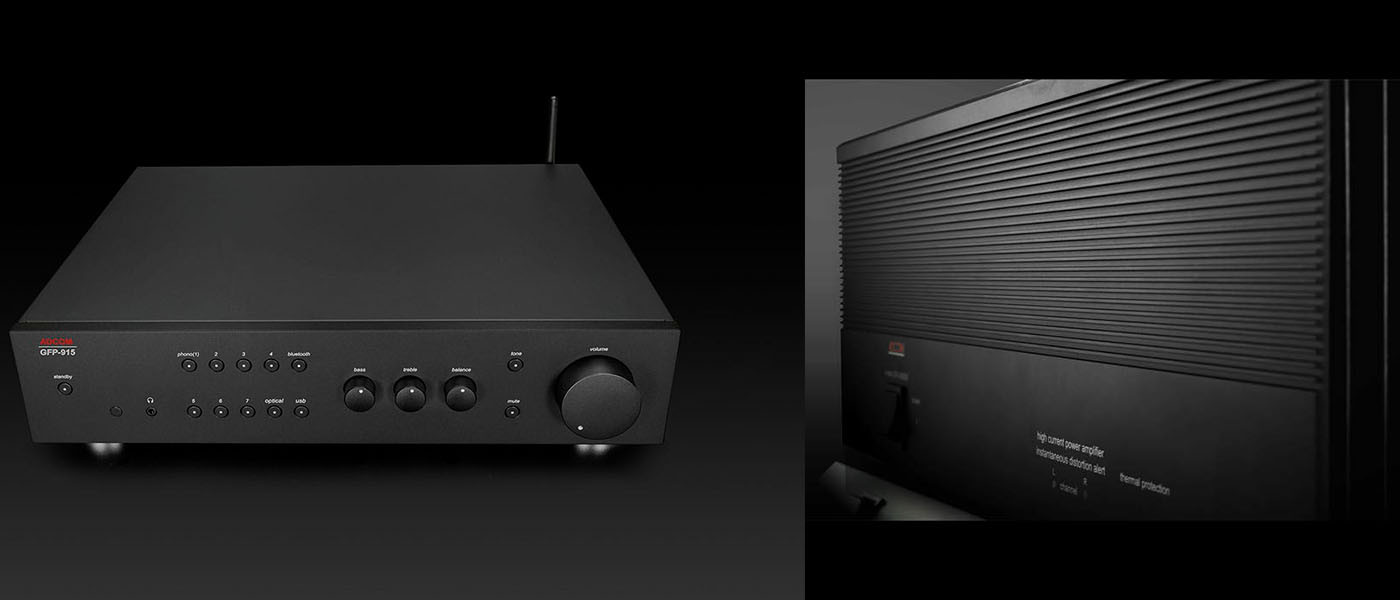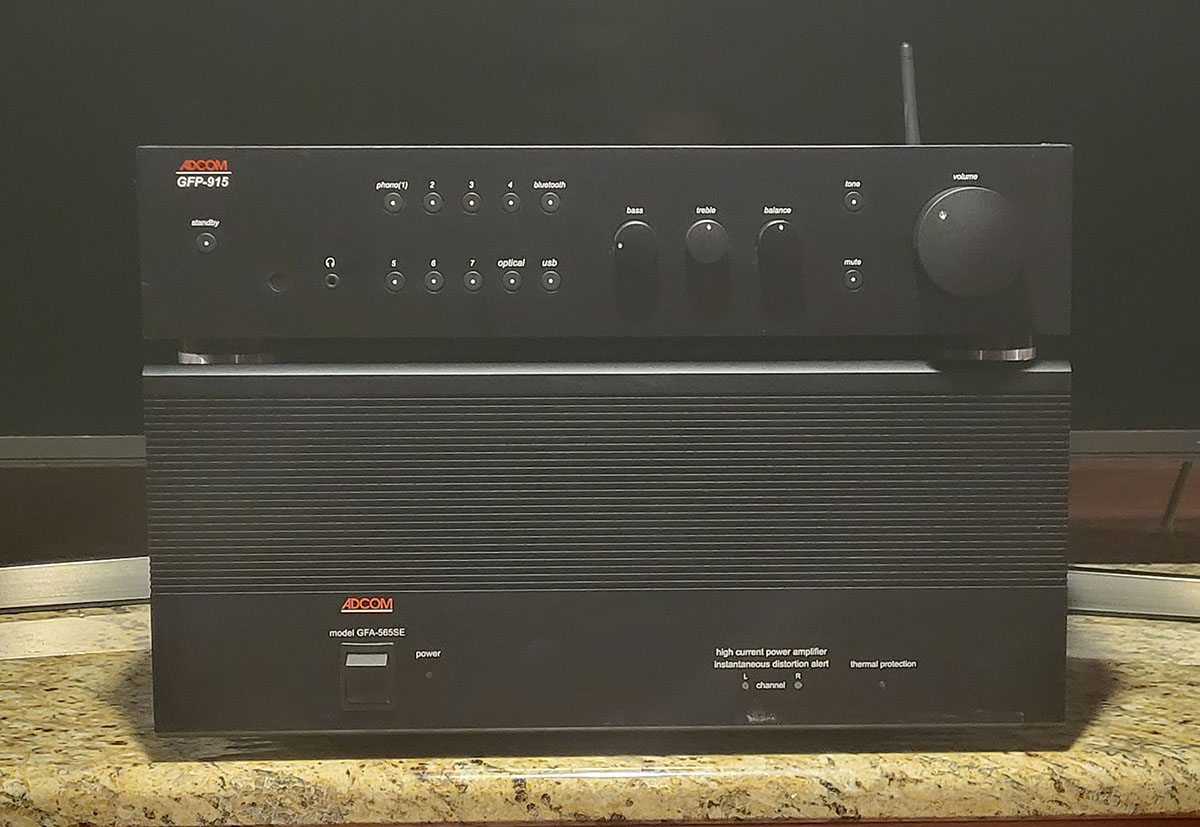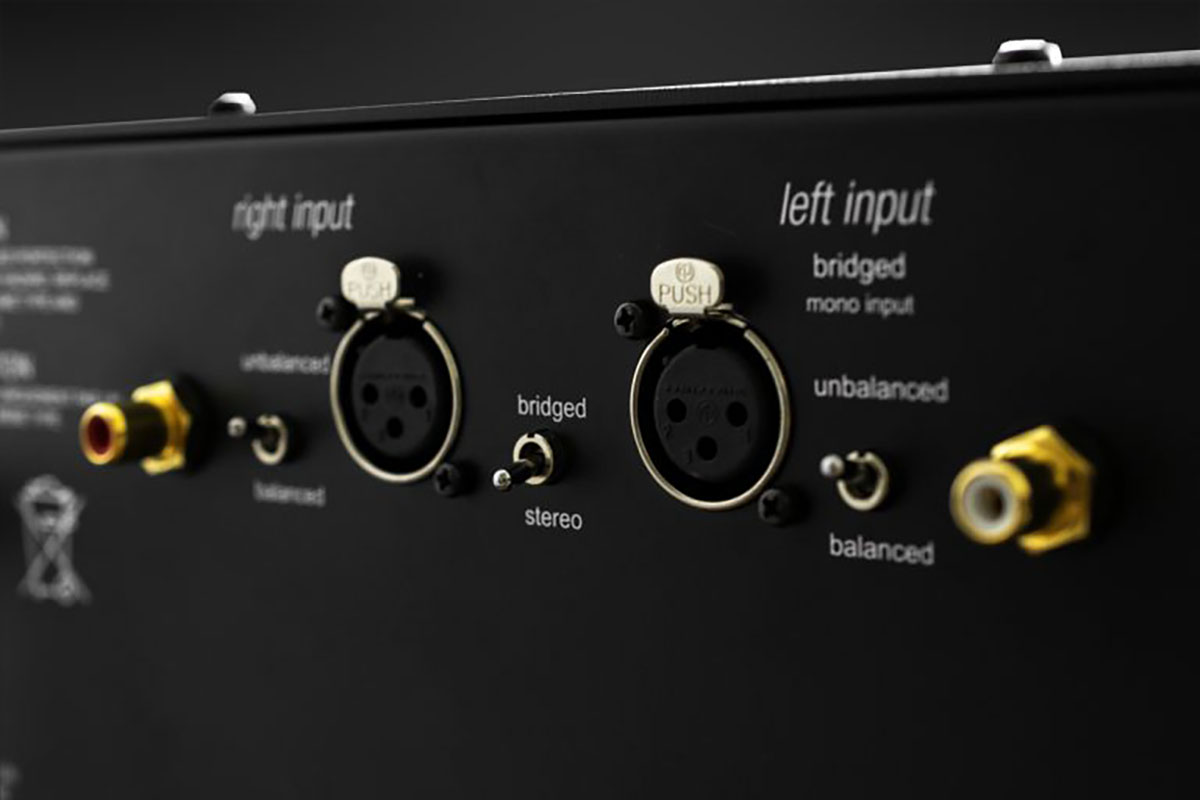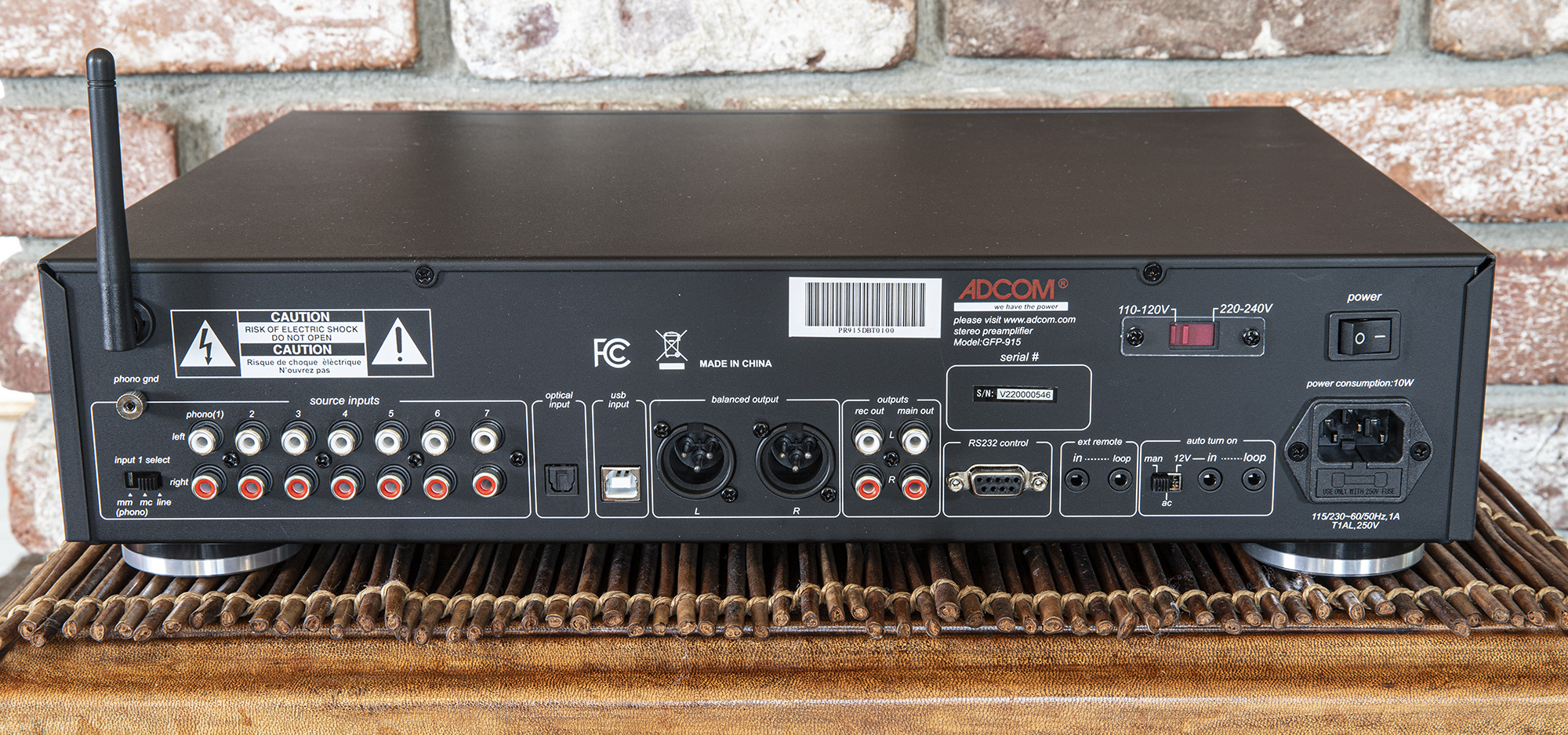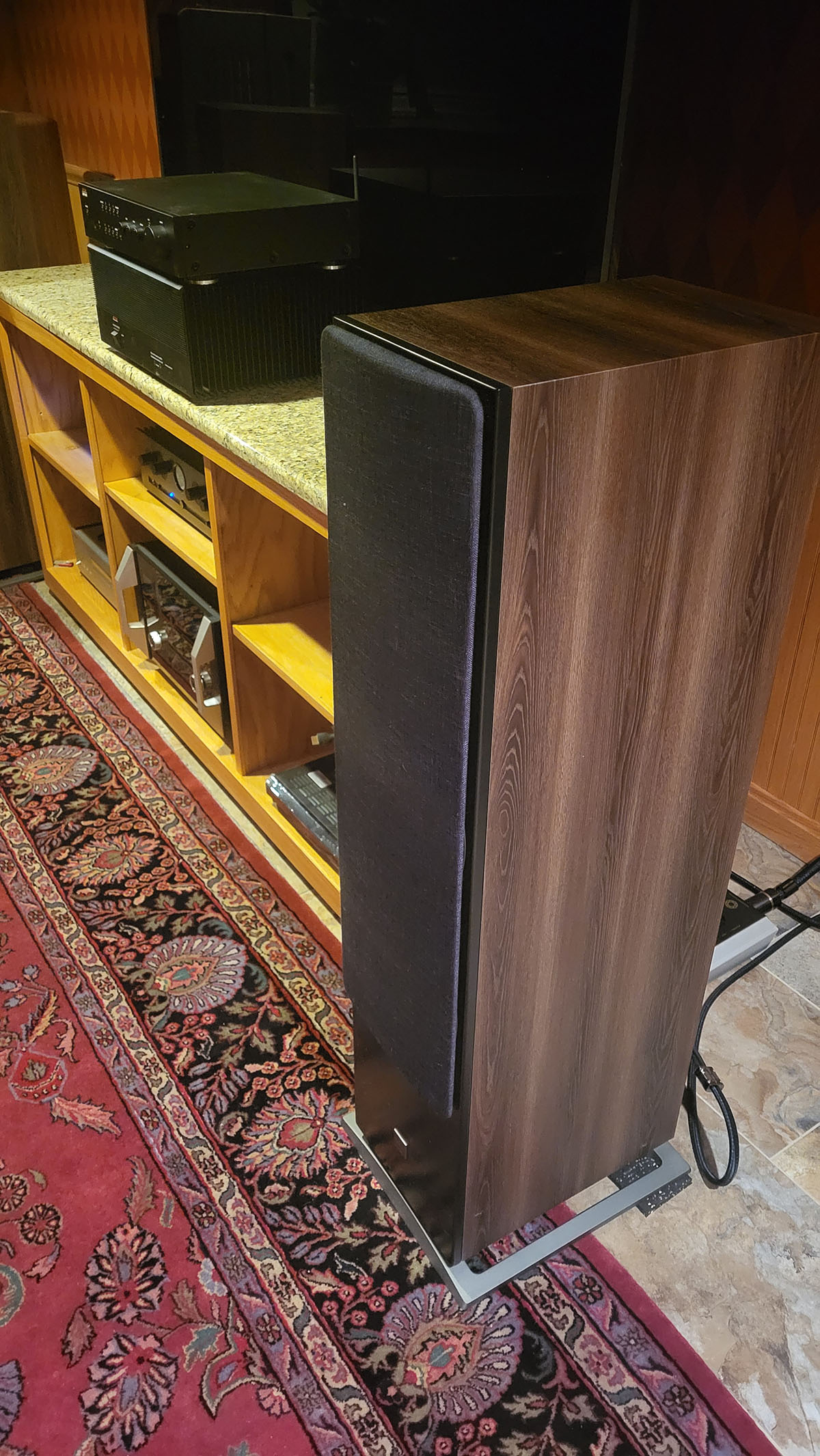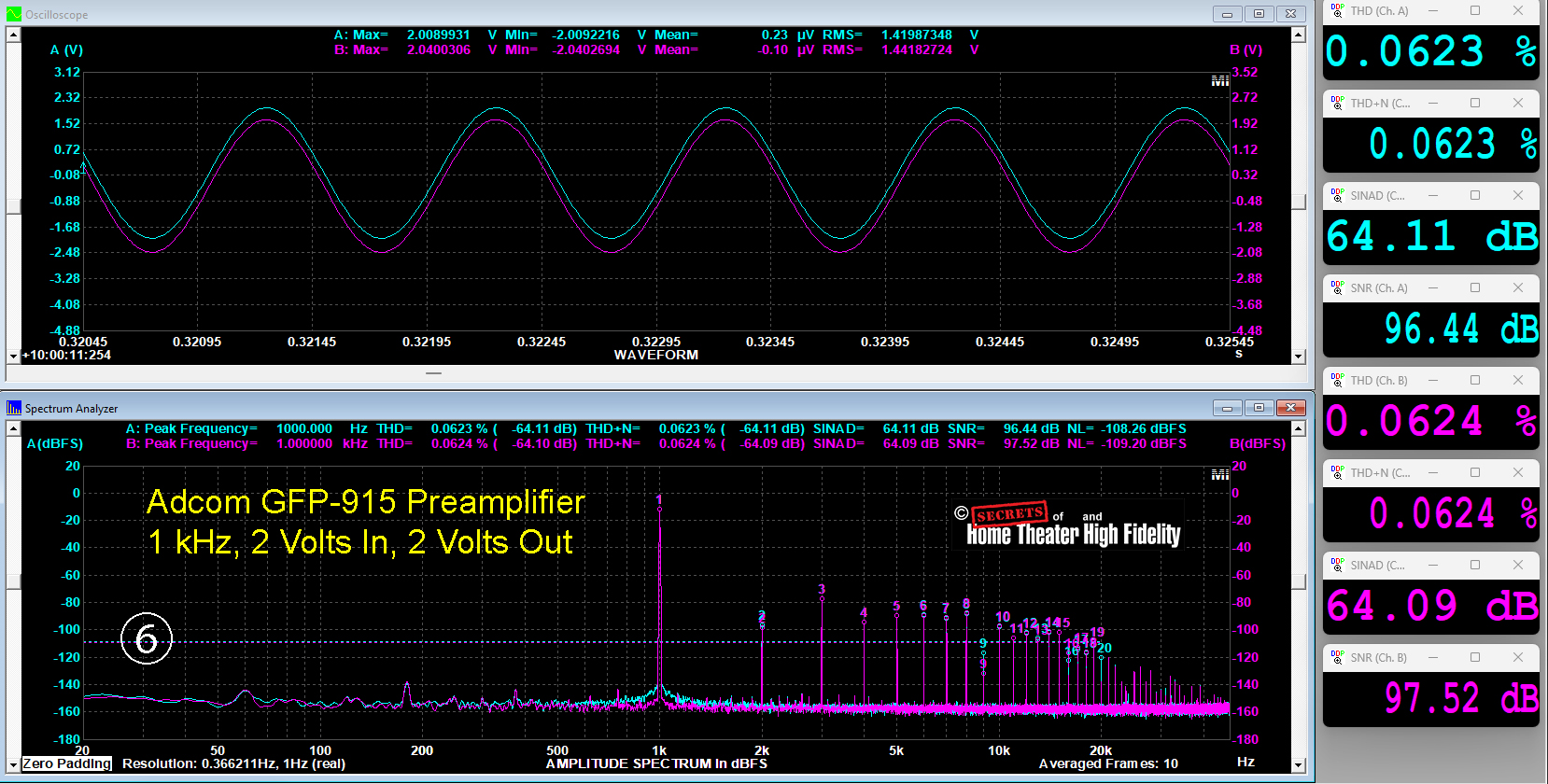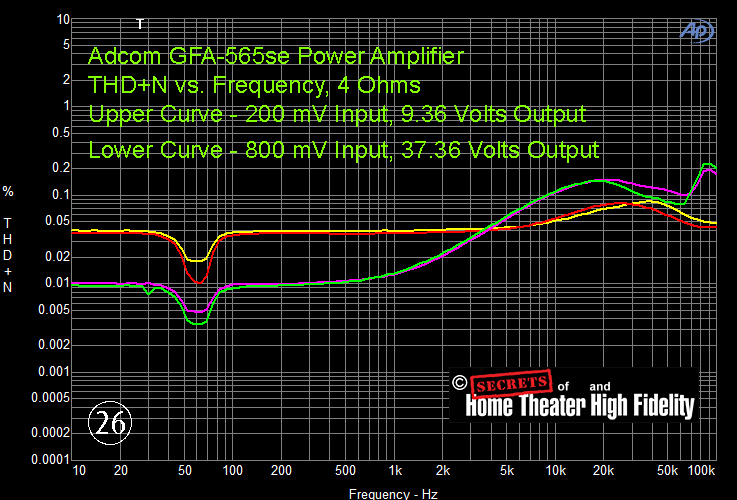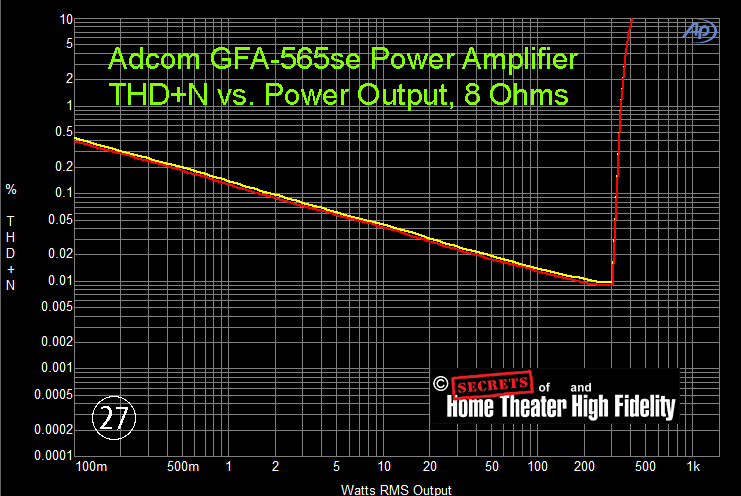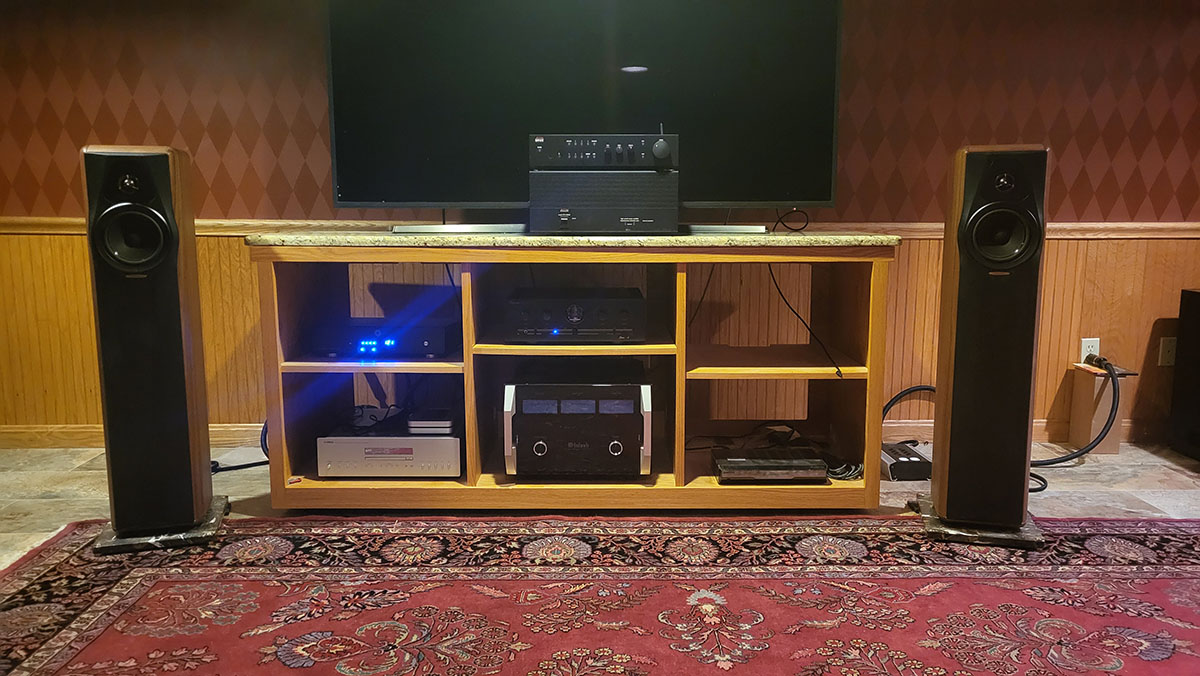In 1981, I purchased my first ADCOM product, a GFA-1 power amplifier. It was a 200 watts-per-channel powerhouse of a cube amplifier that survived my senior year of college with ease. In 1989, I snagged the original GFA-555 power amp and GTP-400 tuner pre-amp, two components that received high praise for delivering exceptional performance for the money. That pair served as the centerpiece of my system for a decade. It has now been over 20 years since I last owned an ADCOM product, and it still brings memories of outstanding performance. At The Capitol Audio Fest 2023 in Rockville, Md. In November, the North American distributor for ADCOM asked our Editor-in-Chief, Carlo Lo Raso, if I was available to review these latest offerings. Of course, the answer was an enthusiastic YES! (This is Secrets’ first ADCOM review in nearly 14 years! Ed.)
ADCOM GFP-915 Preamplifier Highlights
- The classic look from the 1980s.
- Class A preamp section.
- Bluetooth input.
- Built-in phono preamp.
- Useful bass and treble controls.
- USB input.
- Low noise in listening tests.
GFA-565se Power Amplifier Highlights
- High current class A/B design.
- Classic ADCOM power amp look.
- Weighs 51 pounds.
- Bridgeable to 700 watts @ 8 ohms.
For over two decades, ADCOM was a household name in the world of audio. They received dozens of awards for making high-end audio products that sold for mid-fi prices. There were even companies that offered relatively affordable modifications to ADCOM preamps and power amps to elevate performance even further. Over 100 dealers across North America carried their products, and ADCOM was a stellar example of good old-fashioned American excellence in the world of audio. Over the past 15 years, ADCOM has been relatively quiet, selling most products factory direct with a few dealers still carrying their components.
Boris Meltsner – the owner of Amped America, a USA-based company that is developing its own reputation for high-quality preamps and Class D power amps, is bringing ADCOM back to the USA. Mr. Meltsner is quite enthused about being the North American distributor for ADCOM.
Secrets Sponsor
Frequency Response: (±0.5 dB Line volume at max)
5 Hz – 100 kHz, High Level 50 Hz – 50 KHz.
THD + Noise (@rated output 20 Hz – 20 kHz):
0.005%, High Level 0.15%, MM. 0.03% MC.
Signal to Noise (@rated output – A-weighted):
≥100 dB High Level
≥95 dB MM, ≥95 dB MC.
Weight:
15.7 lbs. (7.0 kg)
Shipping Weight: 20 lbs. (9.05 kg).
Input Sensitivity:
500 mV High Level, 3.5 mV MM, 25 mV MC.
Input Impedance:
11 Ω High Level, 11 Ω MM, 11 Ω MC.
RIAA accuracy:
± 0.25dB (20Hz – 20kHz) phono.
Output Impedance:
100 Ω Bypass Outputs, 100 Ω Main Outputs, 475 Ω Tape Outputs.
Output Level:
2.0 Vrms Bypass Outputs, 2.0 Vrms Main Outputs, 1.0 Vrms Rec Outputs.
Output Level (Maximum):
10.0 Vrms Bypass Outputs, 10.0 Vrms Main Outputs.
USB Input (Maximum support):
192K/24bit Optical Input (Maximum Support)
192K/24-bit.
Bluetooth Version:
Qualcomm 5.0.
Tone Controls:
± 11.5 dB Bass (20Hz), ± 8.5 dB Treble (20kHz).
Power:
110 VAC – 240 VAC, 50/6O Hz.
Max Dimensions:
4.13” x 16.9” x 14.3” / 105 mm. x 430 mm. x 335 mm.
MSRP:
$999.00
Website:
Output Power:
250 watts into 8 ohms, 350 watts into 4 ohms, 700 watts into 8 ohms, bridged.
Frequency Response @ 1watt, 8-ohms:
+0. -0.25dB, 10Hz to 20kHz.
Power Bandwidth (-3dB):
5Hz to 100kHz.
Input Impedance:
100,000 ohms.
Input Sensitivity:
12.1V RMS @ 250W into 8 ohms, 130 mV RMS @ 1W into 8 ohms.
Damping Factor:
>800, 20Hz to 20kHz.
Max Dimensions:
7-1/4” x 17” x 14-3/16” / 185mm x 432mm x 360mm.
Weight:
51 lbs. / (23kg).
Shipping Weight:
55 lbs. / (25kg).
Power:
120VAC & 230VAC / 50-60Hz.
MSRP:
$1899.00
Website:
Company:
SECRETS Tags:
adcom, gfp-915, gfa-565se, power amplifier, preamplifier, stereo amplifier, two-channel
- ADCOM GFA-555se Stereo Power Amplifier Review
- Rogue Audio RP-5 v2 Preamplifier Review
- NAD C 3050 Stereophonic Amplifier Review
Secrets Sponsor
The basic design of both the GFP-915 and the GFA-565se share a lot with their 1980s ancestors. The GFP-915 utilizes high-quality components in a straightforward ‘wire with gain’ approach to a preamplifier design. The output stages operate in Class A, collective components are low noise, and they represent a lot of value for a kilo-buck. Newer features include a Bluetooth input and a DAC which accepts an optical input and a USB input. The look is traditional ADCOM which adheres to the ‘form follows function’ school of thought. Another nice touch is the remote control which allows easy switching between formats along with volume control. It is a masculine-looking preamplifier while retaining a look of elegance. It would not be out of place to describe the overall appearance of the GFP- 915 as a ‘tuxedo’ component.
The GFA-565se takes this tuxedo look and turns it into a box car. It’s big, beefy, and lets you know from the first view that it is an old-school amplifier. It operates as a Class AB unit and uses all of its 51 pounds to deliver a feeling of intense strength. Personally, I like the look of both components. The no-nonsense approach taken by this pair tells us they mean business. The ability to be bridged into a 700-watt mono amp is not to be overlooked.
The GFP-915 has a balanced (XLR) output and the GFA-565se offers balanced (XLR) inputs for the ultimate in low noise connection, which is a nice touch for a preamp/power amp pairing that retails for well under $3000 combined.
After unboxing the ADCOM pair, I placed both units in our high-end system. The Clarus Cable Concerto was used for all electrical connections, and for the first part of the listening sessions, the $3000 per pair DALI Oberon 9 loudspeakers were the choice of transducer.
The rest of the system consisted of Clarus Aqua II XLR interconnects, Clarus Aqua II speaker cables, and a Yamaha CD-2100s CD/SACD player. The streaming service was Qobuz through the ADCOM GFP-915’s Bluetooth input.
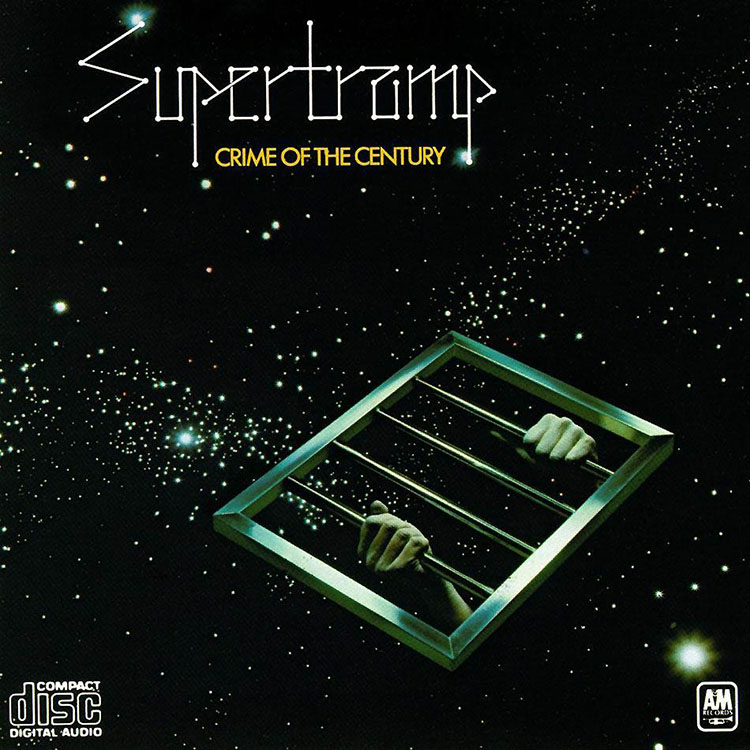
Supertramp: “Crime of the Century”, (CD)
Two bands were known for their dedication to sound quality in the 1970s: Pink Floyd and Supertramp. Crime of the Century has an impressive array of delicate sounds to go with the hard-driving rock. It opens with ‘School,’ which was an anti-government-education song years before Pink Floyd hit on the same idea with ‘The Wall.’ The album follows ‘Rudy’ from his school days into adulthood. As with ‘The Wall,’ ‘Crime’ is a real downer of a performance if one dwells on the lyrics. Personally, I prefer to enjoy the Rock and Roll.
‘School’ starts with Roger Hodgson singing solo with harmonica and subtle guitar playing with him. Then it lets loose with an intensity that demands big speakers and gobs of power (that’s right, Mr. Editor, GOBS is a technical term now) (Indeed. Ed.). Halfway into ‘School,’ the drums kick in with ferocity, and the keyboards by Rick Davies. The ADCOM pair proved itself with a powerful slam through the DALI Oberon 9s. It was one of those moments when reviewing is just plain fun. By the time the bass line storms into the room at the end of the song, it is clear that ADCOM still “has it,” in terms of power.
The rest of the CD is equally impressive. ‘Rudy’ starts with an almost ballad quality to it. The subtle brushwork is presented with clarity and ease. Then the percussion kicks in with deep, authoritative bass drum whacks. The lead guitar and keyboards soared for a bit before going back to Davies singing quietly. ‘Rudy’ ends with a long instrumental, and the power presented by this under $6000 combination of preamp, power amp, and speakers is close to jaw-dropping. The nostalgia for me was palpable. The memories of jamming to this compilation through my ADCOM and Electrovoice audio system from the 80s came back in a big way. If a powerful presence with the ability to deliver detail is your thing, ADCOM needs to be on your shopping list.

Michael Stanley Band: “Live in Tangiers: The Acoustic Shows”
The Michael Stanley Band (MSB) was an Ohio-based rock band that achieved some pretty decent fame in the 70s and 80s. Their live Album ‘Stagepass’ was often heard on college campuses along with REO Speedwagon and Bob Seger. I was able to see MSB twice at the Warner Theater in Erie, Pa. Their concerts still rate as some of my favorites ever. In one concert, a pretty girl jumped on stage. Stanley motioned to security that everything was cool. He grabbed this girl, kissed her deeply, and with an arm still around her, yelled ‘Is this a great f-ing country or what?’ before escorting her to the stairs. It was an awesome moment that had a packed house on its feet.
In 1998, Stanley performed an all-acoustic concert at a venue called The Tangier in Akron, Ohio. It could best be described as a gentle version of not only MSB’s hits in their 15-year run but also songs from the Beatles and The Shirelles. Outside being a trip down memory lane, it is also very well recorded, featuring Stanley on lead vocals and acoustic guitar, vocals from Jennifer Lee, and some adept violin from Ed Caner.
The opening song, as was done on ‘Stagepass’ 22 years earlier, is ‘Midwest Midnight,’ a song about the difficulties in becoming a success as a rock band. One of the best lines was in response to a critic: ‘He was taken to task by a critic who asked, do you write the words, or lyrics first.’ Of course, this is pointing out the ignorance of most critics (also known as reviewers, a moment of reflection is needed here) in their desire to sound important.
The ADCOM pair handled this much more delicate music with ease. There was not a hint of harshness, and I ended up listening to almost two hours of track after track while enjoying the performance. One can hear that Stanley’s voice has aged, yet he still manages to hit the high notes. The staging of the band members is also rendered quite well. This ADCOM pair is not quite as rich as the $12,000 Rotel Michi P5/S5 combination, but it is 75 percent there for 25 percent of the money.
ADCOM meets Sonus faber
The ADCOM 565se and GFP-915 handled the DALI Oberon 9’s with ease. It was time for a more difficult test, the Sonus faber Maximus Amator ($16,000 per pair). The Maxima Amators made the cut as an Elite (our highest level) component, and represent a considerable challenge for a relatively budget preamp/power amp.

The Artistry of the Modern Jazz Quartet (Qobuz)
Spanning from 1952 to 1955, this 65-minutes of transitional jazz is one of those sublime performances that give one the feel of being in a live jazz club if the system is up to the task. The Quartet’s team was the joining of John Lewis (piano), Milt Jackson (vibraphone), Percy Heath (double bass), and Connie Kay (drums).
The opening song is widely considered to be the best representation of the talents of The Quartet, and is titled ‘La Ronde.’ The energy is palpable and the ADCOM pair does a solid job of delineating the wonderful double bass that sets the pace for most of the song. The drums are intimate jazz with lightning-quick, relatively soft strokes that are expected with jazz, rather than the savage hits that rock music usually brings. The vibraphone is tuneful, meshing perfectly with the piano.
This style of jazz works best on a system with a touch of warmth, and this is one area in which the ADCOM duo is bested by the Michi P5/S5 pair, and the Rogers High Fidelity KWM-88 tube integrated amp. The Sonus faber Maxima Amator is an exceptionally revealing loudspeaker, and while the ADCOM GFP-915 and GFA-565se are fine separates, they are not in the league of the much more expensive components.
Don’t let that dissuade you, as it would be a surprise if they did do as well as the more expensive gear. We are talking about a lot of power and performance for under $3000, after all. For their price point, they check a lot of boxes and are fine performers.
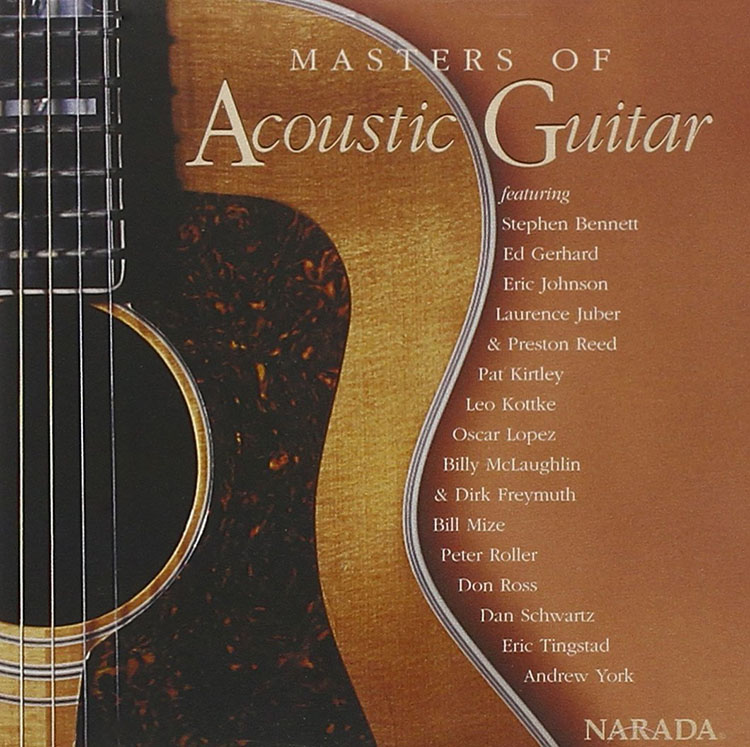
Masters of Acoustic Guitar
This gathering features Leo Kottke, Billy McLaughlin, Dirk Freymuth, Ed Gerhard, Stephen Bennett, Eric Johnson, Oscar Lopez, Peter Roller, Don Ross, Eric Tingstad, and Andrew York. The performance is exactly as the title suggests: outstanding guitarists playing the purest form of music: unamplified instruments. This disc is the perfect choice for testing a system’s ability to imitate live music in an intimate setting. There are 14 tracks and over an hour of relaxing music on this CD, and for over the 20 years that I have owned it, it is still a favorite.
The ADCOM pair again did quite well in terms of delivering quality music from this rather difficult-to- reproduce performance. Individual notes were distinct, and subtle cues such as a performer’s hand hitting the body of the guitar, which provides a percussive effect, were done with above mid-fi ease. I have listened to this disc dozens of times on the Rotel/Michi pair, and they have that hard-to-define musicality and warmth that the ADCOM pair does not quite match. This again is to be expected, as the Michi components sell for four times the money.
Before taking apart my reference system and putting the Michi S5/P5 back in, a hunch had me try something. The GFA-565se was left in the system, but the Michi P5 replaced the ADCOM GFP-915. This swap out brought the system OH SO close to the sound of the Michi pair on several difficult tracks.
Bench tests and technical analysis by John E. Johnson, Jr.
For the bench tests, except where noted, I used the RCA inputs and XLR outputs.
First, 1 kHz, 1 Volt Input, and 1 Volt output (Figure 1 below). Distortion was about 0.05% in the left channel and 0.07% in the right. The exact numbers can be seen in the column on the right. Click on the figures to enlarge them. The 3rd harmonic is only a bit larger than the 2nd.
Crosstalk (channel separation) is -77 dB below 1 Volt.
IMD with a 1 Volt input and 1 Volt output was 0.1%. Seen in Figure 2 below.
In Figure 3 below, you can see the results of a 1/10th octave test, where voltage is applied every 1/10th octave from 20 Hz to 20 kHz. There is a lot of distortion, and it is all below -80 dBV. Because of this spectrum, I would anticipate it will sound like a mild hiss in the background when listening to music, so the individual distortion peaks will be masked.
The Frequency Response at 1 Volt input and 1 Volt output is shown in Figure 4 below. You can see a roll- off of several dB below 400 Hz and a slight rise above 12 kHz. This was correctable using the built-in bass and treble controls shown in another figure later.
The type of distortion vs. frequency is shown in Figure 5. The 3rd ordered harmonic is slightly higher than the 2nd-ordered harmonic throughout the response.
In Figure 6, a 1 kHz sine wave test for 2 Volts input and 2 Volts output is shown. Distortion is still about 0.06%. The third-ordered harmonic is higher than the 2nd-ordered harmonic compared to 1 Volt input and 1 Volt output (Figure 1).
With the volume control set so that a 2 Volt input results in a 4 Volt output, shown in Figure 7, the 3rd-ordered harmonic is larger, relative to the 2nd-ordered harmonic, than with lower voltage outputs.
In Figure 8, below, the Frequency Response with bass and treble controls adjusted (just a bit to the right of 12 o’clock for the bass and a bit to the left of 12 o’clock for the treble) is now within about 0.5 dB. The squiggly left ends of the frequency response lines are an FFT artifact.
One interesting finding is shown below (Figure 9). With a low voltage input (turning down the volume on the streamer which outputs to the GFP-915), and a medium volume control setting on the GFP-915 such that the output is, in this case, 0.57 Volts (which would produce a medium listening volume), the 2nd-ordered harmonic is the lowest throughout the audible spectrum (the horizontal yellow line). This suggests that the GFP-915 is a single-ended device, and the flat line in the distortion from the low frequencies to the high indicates little to no negative feedback. Listening this way would produce a very warm sound, not exactly like a 300B triode tube (which gives about 0.3% 2nd-ordered harmonic distortion), but probably very noticeable and pleasant. This is the way I would suggest using the GFP- 915.
With the USB digital input, I found that the maximum output was about 175 mV (0.175 Volts). I suspect this is what Adcom did on purpose, expecting that consumers would use the 1/8″ stereo headphone jack with earbuds when connecting to the USB input. Limiting the volume would keep users from damaging their ears. The volume in my earbuds was about right with this. In Figure 10 below, you can see that there is a roll-off at 20 kHz even though the sampling with the test signal was 24/96. It will accept up to 24/192 music, but the 20 kHz roll-off will still be there. The distortion pattern is a bit odd though, with it dropping considerably between 5 kHz and 12 kHz.
Overall, the Adcom GFP-915 preamplifier performs within its price range. Using a low voltage input signal and countering this with a medium volume control setting delivers an unusual 2nd-ordered harmonic sound which should make a lot of people happy. I would like to see an LCD panel that displays the volume in numerical form, and more output when using the digital inputs.
Now, on to the Adcom GFA-565se Stereo Power Amplifier.
I tested the amplifier in XLR balanced input mode. This is accomplished by using a toggle switch on the rear panel for each channel.
At 1 kHz, 200 mV input, 9.36 Volts output into 8 Ohms, distortion was 0.041% (shown in Figure 11 below).
At 4 Ohms and the same output (Figure 12 below), distortion rose slightly, which is expected. Note that the 2nd-ordered distortion peak is at or slightly above the 3rd-ordered peak. This will give good listening at modest loudness (12 Watts at 8 Ohms, 24 Watts at 4 Ohms).
Raising the input voltage to 900 mV (0.9 Volts), the output was at 42.17 Volts (222 Watts into 8 Ohms). THD+N was 0.01% (Figure 13).
At 900 mV input and 42.13 Volts output into 4 Ohms, distortion only rose 0.003% over what it was at 8 Ohms (Figure 14). Now the 3rd-ordered harmonic peak is noticeably higher than the 2nd-ordered peak. A 4-ohm load does stress an amplifier at high voltages. Nevertheless, the total distortion is still low because this reading is at 444 Watts which is enough to shake the foundation of your house.
The standard 60 Hz, 7 kHz IMD test with 200 mV input and 7.8 Volts into 8 Ohms gives 0.012% IMD (Figure 15).
With a 4 Ohm load (Figure 16) and the same input and output as in Figure 15, IMD increased by only 0.001%. That is commendable.
Figure 17 below shows 35 Volts output into 8 Ohms (154 Watts). IMD was 0.007%.
At 4 Ohms (Figure 18), IMD increased a bit more than it did at low voltage, but it is still a reasonable amount at 0.011%.
The use of 19 kHz and 20 kHz sine waves is also a standard test. With an input of 200 mV and output of 6.59 Volts into 8 Ohms (Figure 19 below), there are only two measurable peaks on either side of the input peaks.
A 4-ohm load increased the number of side peaks to five on either side (Figure 20).
With an output into 8 Ohms of 29.72 Volts, there are now 4 peaks on either side (Figure 21). This is a pretty good result for an amplifier at such an affordable price.
With 4 Ohms and the higher voltage, now there are eight side peaks (Figure 22).
Frequency Response into 8 Ohms is shown below in Figure 23. The lower curve is with 9.36 Volts, and the upper curve is with 28.05 Volts output. You can see that at higher voltage, the roll-off is steeper. However, at 20 kHz the response is only about 0.2 dB down.
With a 4 Ohm load, the roll-off is a bit steeper, but not significantly (Figure 24). About the same response at 20 kHz.
Figure 25 illustrates THD+N vs. Frequency for an 8 Ohm load. At a lower voltage, the curve slopes upward at higher frequencies, while at a high voltage (upper curve, 42.15 Volts, 222 Watts), the curve is rather flat, with distortion hovering at about 0.05%. Impressive performance!
Figure 26 shows THD+N vs. Frequency for a 4 Ohm load. The 4 Ohm curves are a similar shape to the ones in the 8 Ohm load figure (Fig 25), but the bumps above 10 kHz in the 4 Ohm figure are higher. I had to use 800 mV input for the 4 Ohm load because 900 mV pushed the amplifier into clipping.
The power output curve for 8 Ohms is shown in Figure 27 below. The knee is at 310 Watts (0.01%) which is above the 250 Watts specification. At 1% THD+N (clipping), which is the usual power specification, the output is 350 Watts. Quite the powerhouse, this amplifier is!
At 4 Ohms, the knee is at 430 Watts. Clipping is at 500 Watts. We are increasingly seeing an opinion that ratings should be at the knee rather than at 1% THD+N. The knee defines the useful power. 430 Watts sure is a useful power rating to me!
The Adcom GFA-565se Stereo Power Amplifier performs well above spec and above its price level. A very nice product. This thing rocks! You can never have too much power in your stereo setup or home theater, only not enough power. If the amplifier has lots of power, it just means you have more dynamic range available. You still listen at a modest setting on the volume control. Not having enough power can result in clipping which can damage speakers.
A home theater kit with four 565ses for the front pair, side pair, rear pair, and a bridged one for the center would have your neighbors wanting to watch movies at your house. For the Would Like to See comments, I would like to have the main power switch on the rear and standby/on switch on the front with a few watts on during standby to keep the circuits warm.
It may seem that I was a bit harsh about the GFP-915. What I would really like to find out is what could Boris do with the input on this unit to bring it up to the quality level of the GFA-565se. The GFP-915 is a reasonable preamp for $999. This reviewer thinks that, with some engineering help from Boris, it could be a $1,499 giant killer of a preamp.
- Rugged looks.
- Ample power.
- Detailed Sound.
- GFA-565se punches above its price range.
- Excellent Bluetooth input on GFP-915.
- Full-featured pre-amplifier.
- Bass and Treble controls bring life to older music.
- GFP-915 matching build and sound quality of GFA-565se.
- A standby mode that keeps the circuits warm.
We started this review with a brief discussion of ADCOM’s history. Part of that history is ADCOM going from a USA-owned and based company to one that builds its products in China and Taiwan. What was once a household name to American audiophiles was largely forgotten.
Enter Boris Meltsner, who is quite an interesting man and entrepreneur. Boris was born in The Soviet Union and still has a strong accent (whenever I meet someone with a strong accent, I am always reminded this person knows at least one more language than I do). He owns Amped America and proudly manufactures his line of products in the USA. Boris was kind enough to spend two hours with me at the 2023 Capital Audio Fest in Rockville Maryland. It was during this time (the man is a model of patience, with all the surrounding noise and his strong accent, he had to repeat himself often) with Boris that he explained his new venture as the North American distributor for ADCOM products.
As mentioned earlier, Boris asked our Editor-in-Chief, Carlo Lo Raso, if I was available to handle a full review of the GFP-915 and GFA-565se. After agreeing, the next thought was that we should have John E. Johnson, Jr., our founder, do a full battery of measurements on this pair of components. After the measurements were completed and sent to the senior editorial team, the units were sent to me for this listening portion of the review.
The GFP-915 is a pretty decent preamplifier and does a solid job. The GFA-565se is a stellar product and does far more than one would expect in its price range. It is time for a bit of speculation. This reviewer does not think Boris picked up the distribution of ADCOM just to be a reseller. His Amped products are so well designed that one wonders what Boris has in mind for ADCOM. Personally, I would love to discover what he could do with the basic GFP-915 preamp if he added some of his expertise.
The conclusion is: if grading the two components, I would give the GFP-915 a B-, with an asterisk that some great things may happen in the not-too-distant future. The GFA-565se gets a solid A. To paraphrase a well-known bank’s tagline, the question is: ADCOM, what can Boris do for you?


